A post by Emmali Luangrath, an undergraduate majoring in Psychology while pursuing a minor in Interdisciplinary Neuroscience at Portland State University.

Do you feel heard?
Why is it that whenever we listen to our favorite songs or genre of music we feel the most “heard?” How does music call up powerful memories? Have you ever thought about why you feel emotions so intensely when you play that one song from that one artist, musical, or band?

It’s almost like your favorite musicians know exactly what it’s like to go through what we’re going through, even though we’ve never met each other in real life. Regardless of the events that have taken place either recently or years ago, there’s always something we can go back to, and we immerse ourselves into a world that centers us once again.

Getting in tune
As we age, our individual experiences directly shape our perceptions of the world.

Growing up, I was fortunate to have the opportunity to learn how to play an instrument.
As daunting as that might seem for a child in elementary school, it was a ride I have never forgotten. Becoming that “band kid” gave me a whole new perspective on what music does for people. It’s not only about playing the instrument well and making our parents proud, it’s also about getting in tune with our surroundings and feelings.
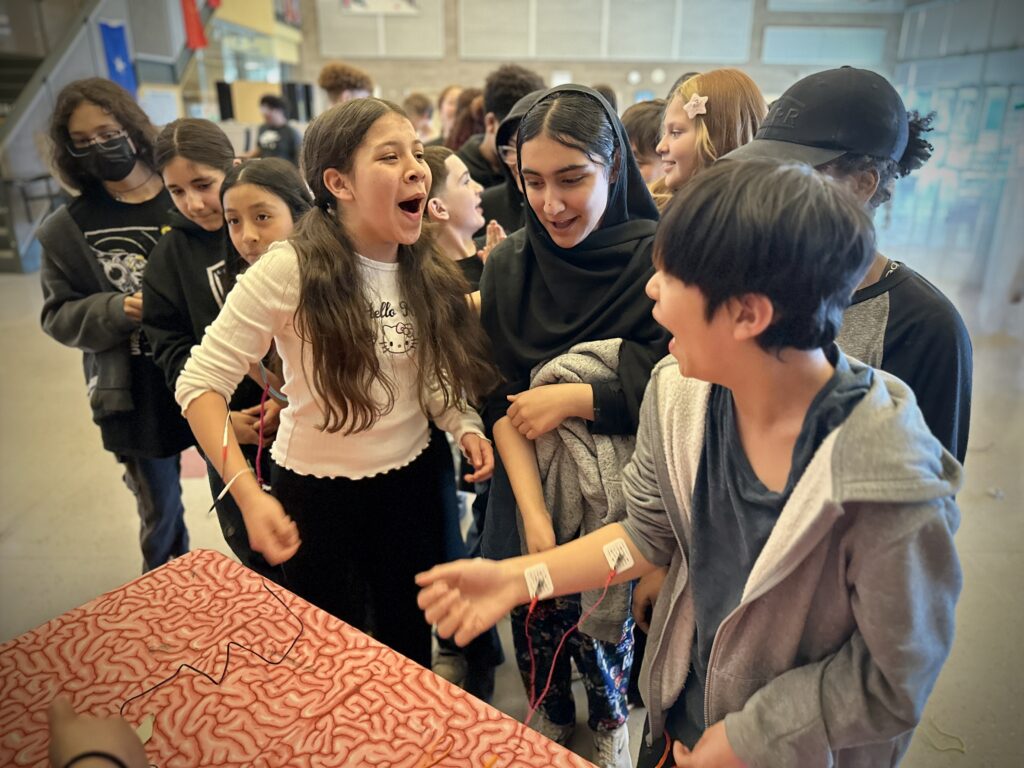
Learning how to be in tune with others lets us learn how to be in tune with ourselves.
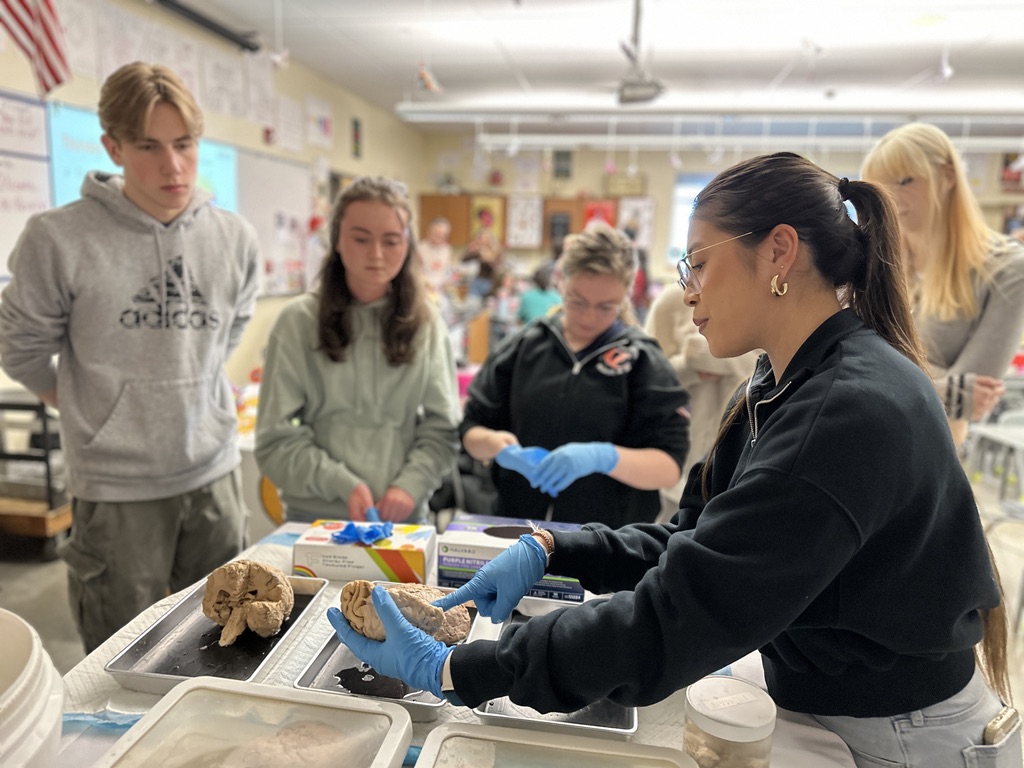
Everyone has different ways of coping with life’s adversities, and for me, it’s always been music.
After years of recognizing how much music does for me, I’m curious about the impact of music on our sound perception, memory, emotional regulation – and our brain. I also want to explore how important it is to introduce music early, as it can benefit childhood and adolescent neurocognitive development.

LEARN MORE: Music
LEARN MORE: Music and Health: What You Need To Know
LEARN MORE: Music and the Brain: The Neuroscience of Music and Musical Appreciation
LEARN MORE: The Transformative Power of Music: Insights to Neuroplasticity, Health, and Disease
How do we even listen to music?
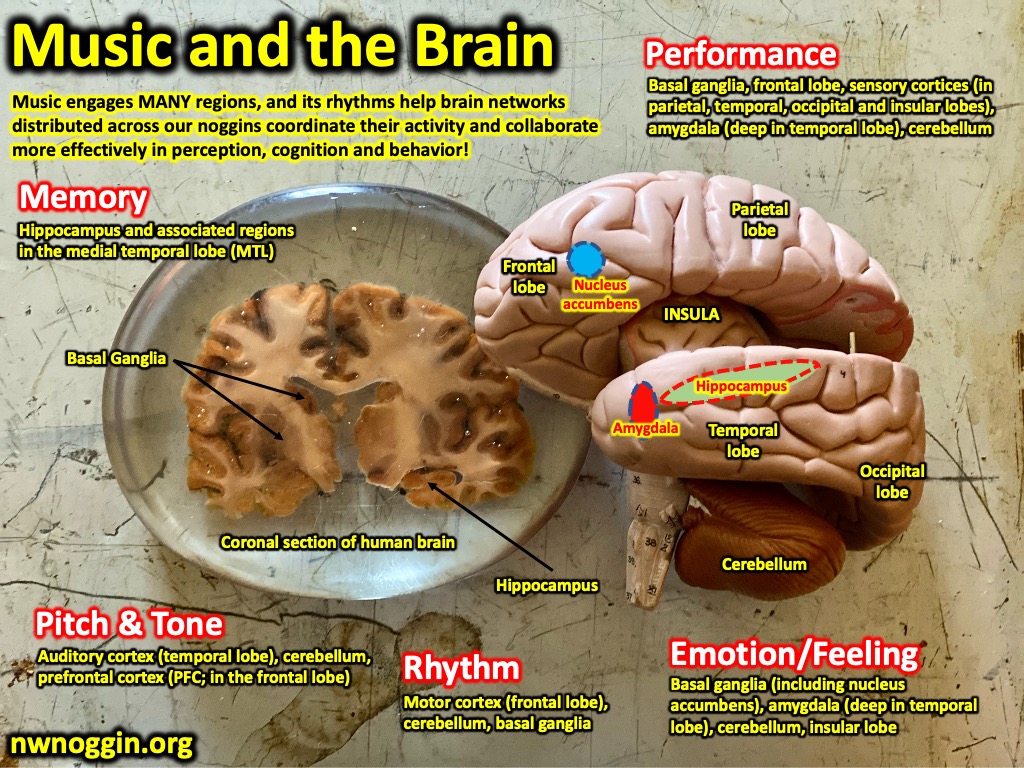
We’re all familiar with the saying, “music to my ears,” but that phrase applies in personal contexts. Everyone has their own preferences when it comes to their taste in music, so what is it that draws our attention? How do we know which songs will help us when we’re feeling a certain emotion?
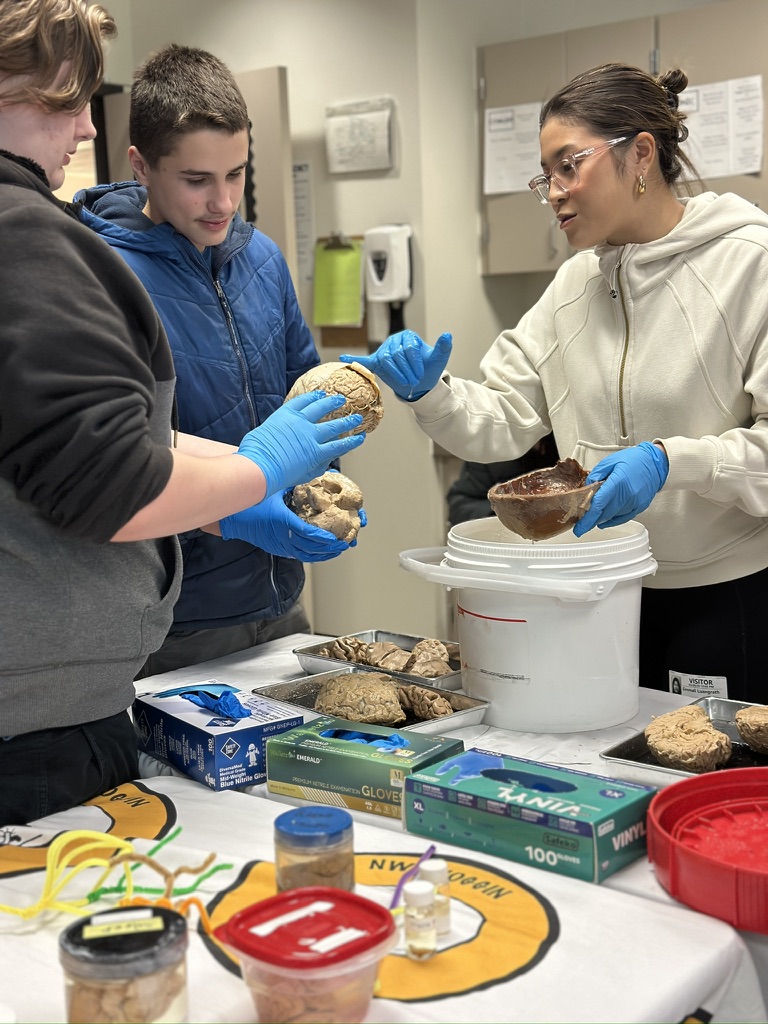
Certain instruments do emit specific frequencies that influence how we perceive their sound. Certain rhythms “itch” the right parts of our brain, allowing us to enjoy an upbeat ’80s song or a slow, mellow ballad that hits us in our feels. But what is sound? What are we actually listening to?

Sound is vibrations traveling through a medium (in this case air) as waves.
Sound waves are produced by the compression (increased pressure) and rarefaction (reduced pressure) of air, and the number of sound wave cycles/second is known as the frequency. In addition to frequency, wave amplitude and complexity are two other physical aspects of sound waves that our ears can detect.

So sound has multiple physical parameters that work together to produce what we hear.
Frequency (perceived as pitch)
Again, the number of sound wave cycles per second is the frequency of the sound.
The frequency of a sound wave is perceived as the pitch. High frequency sounds are perceived as high pitch sounds, and low frequency sounds are perceived as low pitch. This is one of the many reasons why I always draw back on my experience when I was in band class. Playing reed instruments, specifically the clarinet and tenor saxophone, challenged me to pay close attention to how the notes were coming out. I couldn’t be too sharp, but I couldn’t be too flat either. The pitch had to be just right.
Amplitude (perceived as loudness)
Wave amplitude (how large the pressure difference in the wave) is a second physical component of sound, which we perceive as loudness, or volume. If there was a crescendo written on the music sheet, we increased the amplitude (the intensity of vibration) of our instrument. If there was a decrescendo, then we decreased the amplitude.
Complexity (perceived as timbre, or quality)
Lastly, there’s complexity. Complexity comes from the compilation of sound waves of different frequencies and amplitudes we hear, which we perceive as the timbre, or quality, of the sound.
So, in order to SOUND in tune with the rest of my peers and the instruments they played, a lot of practice was put into paying attention to the frequencies, amplitudes, and complexity of my clarinet and saxophone. If any of these components didn’t work together during band class or, even worse, a concert, then anyone in the audience would know exactly where to look when something sounded “off.” Training our auditory system through practice is important!
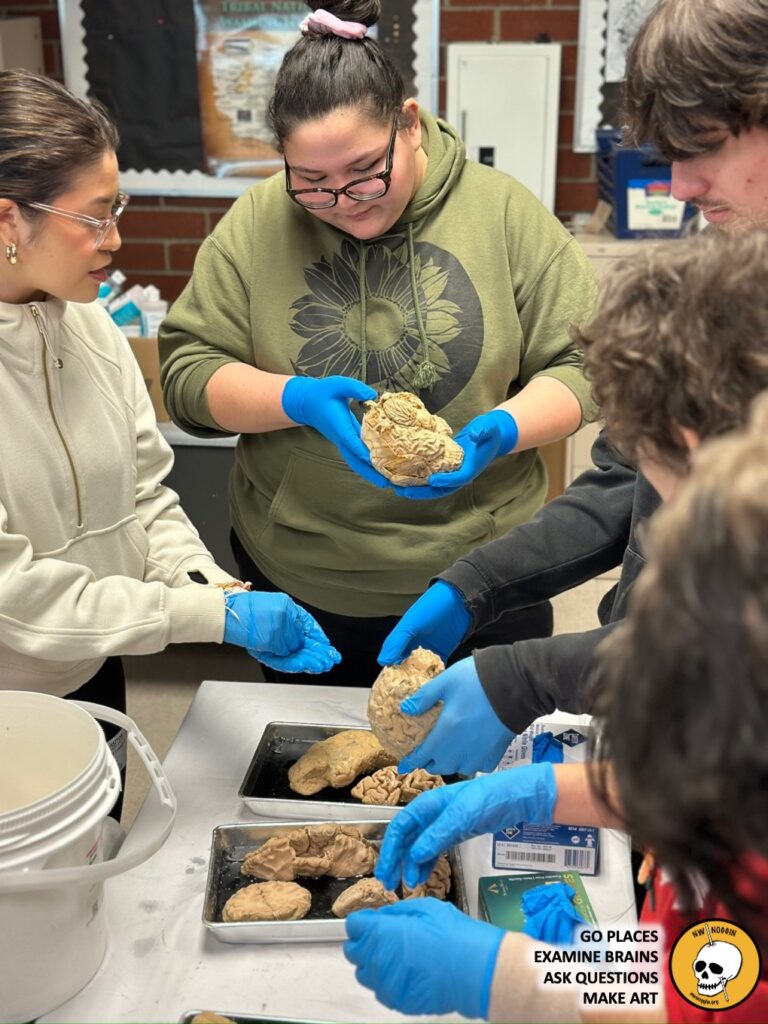
Since I’ve started visiting schools with NW Noggin, it’s been like a walk through band memories.

Some middle school students I spoke with shared their experiences as brass players, specifically trumpet players. They noted how surprised they were with how loud the instrument actually sounded (a very high amplitude!) when they first started learning how to play.

Once they mentioned that, I drew their attention to the plethora of pipe cleaner brain cells we bring for outreach, and we went over the responsibilities of hair cells, and the different kinds of hair cells, and how these cells communicate with other parts of the brain to shape our perception of sound.
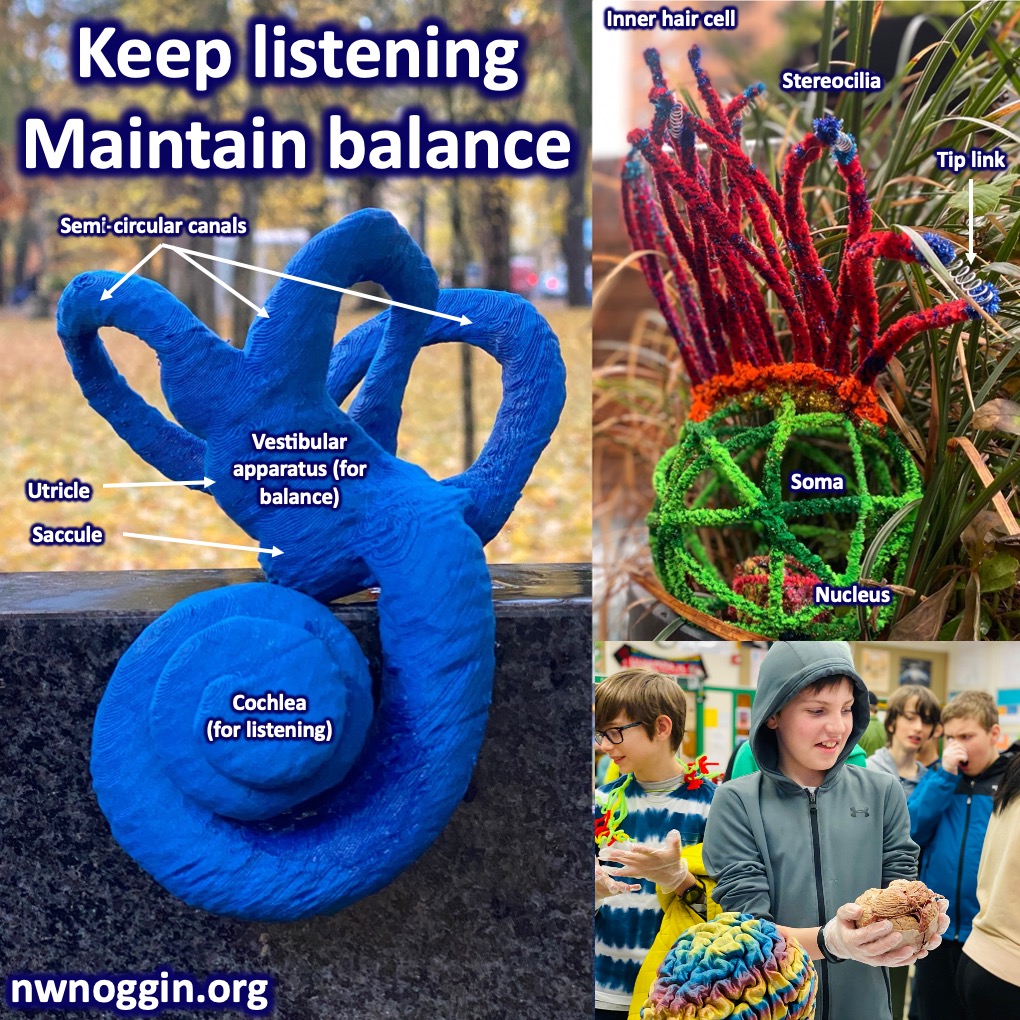
The inner hair cells are the main afferent inputs for audition, or in other words they are the main sensory neurons responsible for hearing. Located in the cochlea, their projecting stereocilia (the hairs) move in response to different frequencies of sound.

The more numerous outer hair cells are also in the cochlea, and they serve to amplify or dampen incoming auditory stimuli, specifically lower frequencies. Both types of hair cell rest on the basilar membrane of the cochlea where they bend and sway from the sounds we hear.
The inner hair cells send that frequency, amplitude and complexity information to a series of processing centers in the brainstem, and then a deep cerebral structure called the thalamus. The thalamus projects to primary auditory cortex (A1) in the temporal lobes, where sound is further processed and perceived.

After differentiating the two types of hair cells (inner and outer), I had students consider which type helped them realize if the sound of their trumpets was too loud. Most chose the inner hair cells, because they respond to different frequencies of sound, and more inner hair cells respond faster when the sound is of higher amplitude (and thus perceived as louder). We also discussed the role of the outer hair cells as they shrink and expand according to the sound coming from their trumpets, contributing to the complexity of our auditory system response.
LEARN MORE: How Do We Hear?
LEARN MORE: Your Brain on Music: The Sound System Between Your Ears
LEARN MORE: On the Classification of Pathways in the Auditory Midbrain, Thalamus, and Cortex
LEARN MORE: Sensory Transduction and Adaptation in Inner and Outer Hair Cells of the Mouse Auditory System
LEARN MORE: Inner Hair cell Stereocilia are Embedded in the Tectorial Membrane
LEARN MORE: Role of Inner and Outer Hair cells in Mechanical Frequency Selectivity of the Cochlea
LEARN MORE: Sound-Evoked Deflections of Outer Hair Cell Stereocilia Arise from Tectorial Membrane Anisotropy
LEARN MORE: Perception and Modeling of Affective Qualities of Musical Instrument Sounds Across Pitch Registers
LEARN MORE: Decoding Music-Evoked Emotions in the Auditory and Motor Cortex
LEARN MORE: Representations of Pitch and Timbre Variation in Human Auditory Cortex
LEARN MORE: Size and Synchronization of Auditory Cortex Promotes Musical, Literacy, and Attentional Skills in Children
“This song reminds me of when…”

Similar to seeing old baby pictures or eating home cooked meals, music can trigger the retrieval of memories, whether they’re pleasant or something we’d like to suppress. There are many opportunities for music to become tied to specific memories. Of all the conversations I’ve had or eavesdropped on, it’s always intriguing to hear “This song reminds me of when…” We don’t always remember exactly where we’ve heard it, but a song may sound familiar because we know we’ve heard it before.

When connecting with students during outreach, I couldn’t help but ask what kind of music they like listening to or who their favorite artists were. Some of them would list off singers or rappers I’ve never heard of before, as well as some artists that rang a bell.
Music is an important stimulus with the power to trigger memories.
I remember one student in particular who told me they like to sing karaoke because it meant singing their family’s favorite songs, which always led to a fun time. Discussing music in schools also reminded me of when I used to work in a senior living home as a caregiver. I had a handful of residents in memory care who differed in their ability to remember events and people. When it came to their evening routines, some nights were more difficult than others, but that’s when music came to the rescue.
Working memory
Memory is complex, and there are several forms. Our current ongoing experiences are considered to be in working memory, pretty much our short term conscious present. Anything persisting for longer is long term memory. If we listen to the radio and hear the talk show host announce, “Up next is this singer’s new song making its debut,” and they proceed to play it, this song will be in our working memory.

LEARN MORE: Music is Similar to Language In Terms of Working Memory Interference
LWARN MORE: THE COGNITIVE NEUROSCIENCE OF WORKING MEMORY
Explicit or episodic or declarative memory
With working memory we process new auditory information by actively thinking about it and how it makes us feel. Let’s say we like a song because it takes us back to a specific memory or feeling. We may add this song to our playlist so we can play it again. At this point the hippocampus plays an important role. This limbic structure in the temporal lobe helps us remember related life episodes as it transfers our working memories into longer term memory. Depending on how often we listen to that song, the hippocampus can help strengthen connections to the memories it brings up, and associate explicit experiences with that song. Maybe if we now hear a different song from the same artist, perhaps in a different setting, we’ll be able to call those related memories up.

LEARN MORE: A closer look at the hippocampus and memory
LEARN MORE: Visual Sequence Encoding is Modulated By Music Schematic Structure and Familiarity
Implicit or procedural memory
But do you know ALL the lyrics and melodies of songs that are important to you, and which are tied to significant moments in your life? When we implicitly predict each word and note in our favorite songs we are relying in part on subcortical networks involved in memory for skills and habits, particularly a set of important structures known collectively as the basal ganglia.
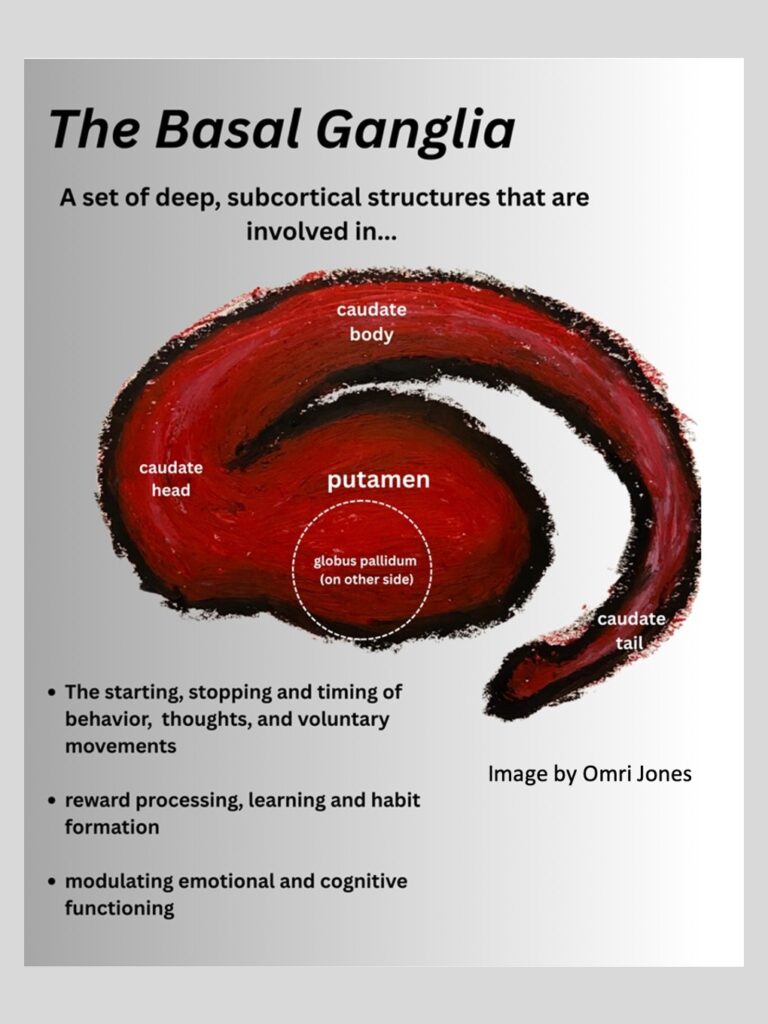
LEARN MORE: There’s a tail in your brain!
LEARN MORE: Learning through mistakes!
LEARN MORE: The role of the basal ganglia in learning and memory
Emotional memory
Music also helps us regulate our emotions.

In our brains there is a little almond shaped structure called the amygdala, one in each temporal lobe. The amygdala responds to meaningful stimuli, including music, by making powerful changes in our body and brain. So if we’re playing sad songs on a loop, it’s possible that our amygdala influenced us to choose something with a slower tempo that can allow us to lean in.

Music affects our amygdala, but it also impacts our autonomic nervous system (ANS). We have both a sympathetic (fight or flight) and parasympathetic (rest and conserve energy) division of this system, which together modulate our involuntary, largely automatic responses to stimuli, including music.
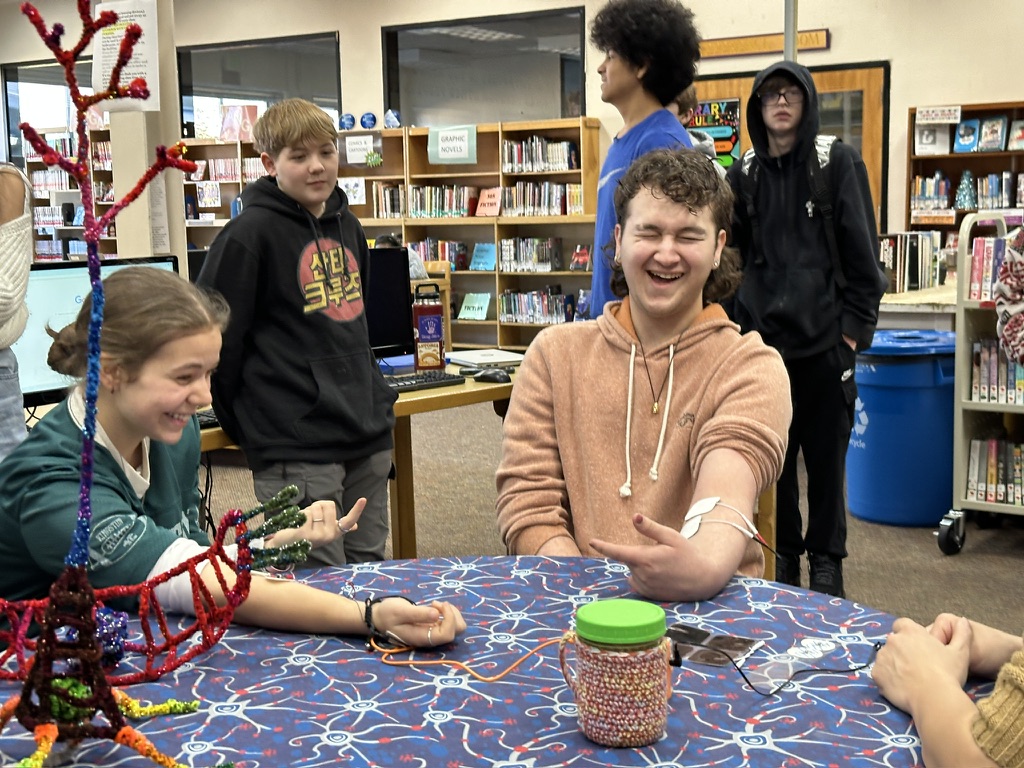
Music can potentially enhance one of these divisions (sympathetic/SNS or parasympathetic/PNS) more than the other. If we were to listen to music that suits our mood right now, are we dancing the night away? Or are we bringing ourselves to a state of zen?

LEARN MORE: Music, Memory, and Emotion
LEARN MORE: Unforgettable Film Music: The Role of Emotion in Episodic Long-Term Memory for Music
LEARN MORE: The Impact of Musical Pleasure and Musical Hedonia on Verbal Episodic Memory
Music therapy is effective for those undergoing stress, anxiety, depression and other challenges.
I know that if I’m feeling stressed or anxious, I turn to music that triggers my parasympathetic nervous system and slows my heart and breathing rates, sometimes to the point where I may even cry. On the other hand, if I’m enjoying an exciting at home concert with my friends, my sympathetic division will trigger an increase in my heart and breathing rates to keep up with the singing and dancing.
LEARN MORE: Music and Health
LEARN MORE: Music therapy for stress reduction: a systematic review
LEARN MORE: Music and Health: What the Science Says
LEARN MORE: Music and Autonomic Nervous System (Dys)function
LEARN MORE: The effects of a music intervention on the autonomic nervous system during recovery from strenuous exercise
Music really is copium!
Learning what kind of music to turn to when we need it can have a powerful therapeutic effect. Music can even reduce the reported intensity of our pain (!!), potentially (in part) by provoking the release of endogenous opioids. So regardless of mechanism, music truly is “copium!”
LEARN MORE: Music as an Adjunct to Opioid-Based Analgesia
LEARN MORE: The transformative power of music: Insights into neuroplasticity, health, and disease
LEARN MORE: Pleasurable music activates cerebral μ-opioid receptors
LEARN MORE: Opioid system and human emotions
Because our brains store memories to the accompaniment of emotions and the music present during important episodes in our lives, that same music can be used as a cue to reconstruct those memories, allowing people to reconnect with themselves and with those they love.
When I cared for my former residents in memory care, they would sometimes grow agitated before starting their nightly routine. Little did they know that I had a trick up my sleeve, which was to pull out my phone and play the music they mentioned enjoying before. After a couple minutes of Frank Sinatra and some questions to help jog their memory, that “a-ha” look spread across their face and I was back on schedule and getting them into bed, all while they reminisced and appeared genuinely happy. Music therapy has been a great aid for those with lost episodic memory in dementia.
LEARN MORE: Music & Memory
LEARN MORE: Alive Inside: A story of music and memory
LEARN MORE: The promise of music therapy for Alzheimer’s disease: A review
Music has also helped me in so many ways, by allowing me to acknowledge, process, and express my emotions. The lyricism and production of a song can make me feel heard, in a way where I don’t have to say anything to feel everything.
Emotional regulation can be tricky to acquire, but emotional intelligence can help us in how we behave. I want to encourage and push for healthy habits to cope with life’s adversities, no matter how big or small. Music can be an important coping mechanism as it may lead to proper amygdala development and therefore more “appropriate” behavior. Again, it’s definitely been copium for me!
LEARN MORE: Can Music Orchestrate Emotional Intelligence?
LEARN MORE: The Impact of Music on Human Development and Well-Being
LEARN MORE: Sad Music Modulates Pain Perception: An EEG Study
LEARN MORE: Investigating Emotion With Music: Neuroscientific Approaches
LEARN MORE: Amygdala Activity Can be Modulated by Unexpected Chord Functions During Music Listening
Encourage Music Education!
Music affects our brains in so many different ways.
Whether it’s attending a concert or throwing on headphones, the sound waves making our hair cells dance have real impact. Considering the countless memories we hold, music is also a prominent factor in how we remember. And music helps us acknowledge and express our emotions. If we have feelings that we just can’t put into words, playing our favorite song or finding the right song might be all we need to appreciate or get through important moments in life.
Having the opportunity to be part of NW Noggin gave me the privilege of connecting with young people across Portland and Vancouver. Each student I was able to speak was generous in sharing their musical experiences and overall interests in neuroscience.

LEARN MORE: Key Changes: Music Educators Change Curricula to Meet Kids Where They Are
LEARN MORE: The Magic of Music
LEARN MORE: Cognitive Crescendo: How Music Shapes the Brain’s Structure and Function
LEARN MORE: The Neurophysiological Processing of Music in Children
LEARN MORE: Music Practice is Associated With Development of Working Memory During Childhood and Adolescence
Seeing all the curiosity and excitement when I asked “Does anyone play a musical instrument or sing” on so many faces was a joy. Music clearly benefits kids, and has lasting impact throughout our lives. When music education is offered during childhood and adolescence, the skills learned are carried into adulthood, and can improve our lives, memories and brains.


